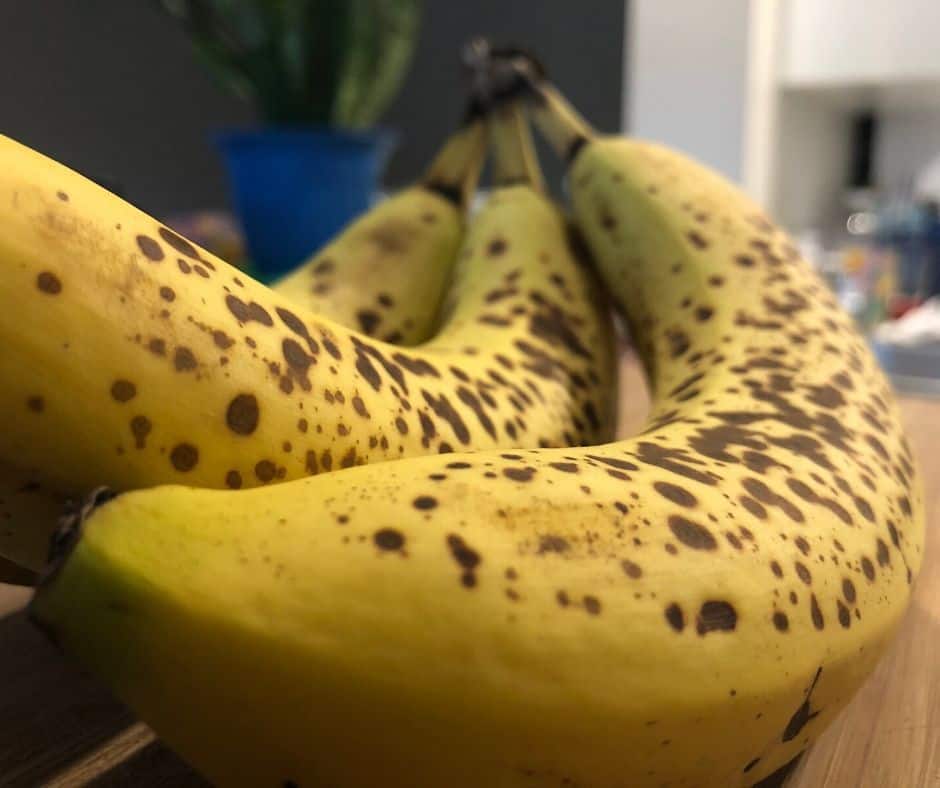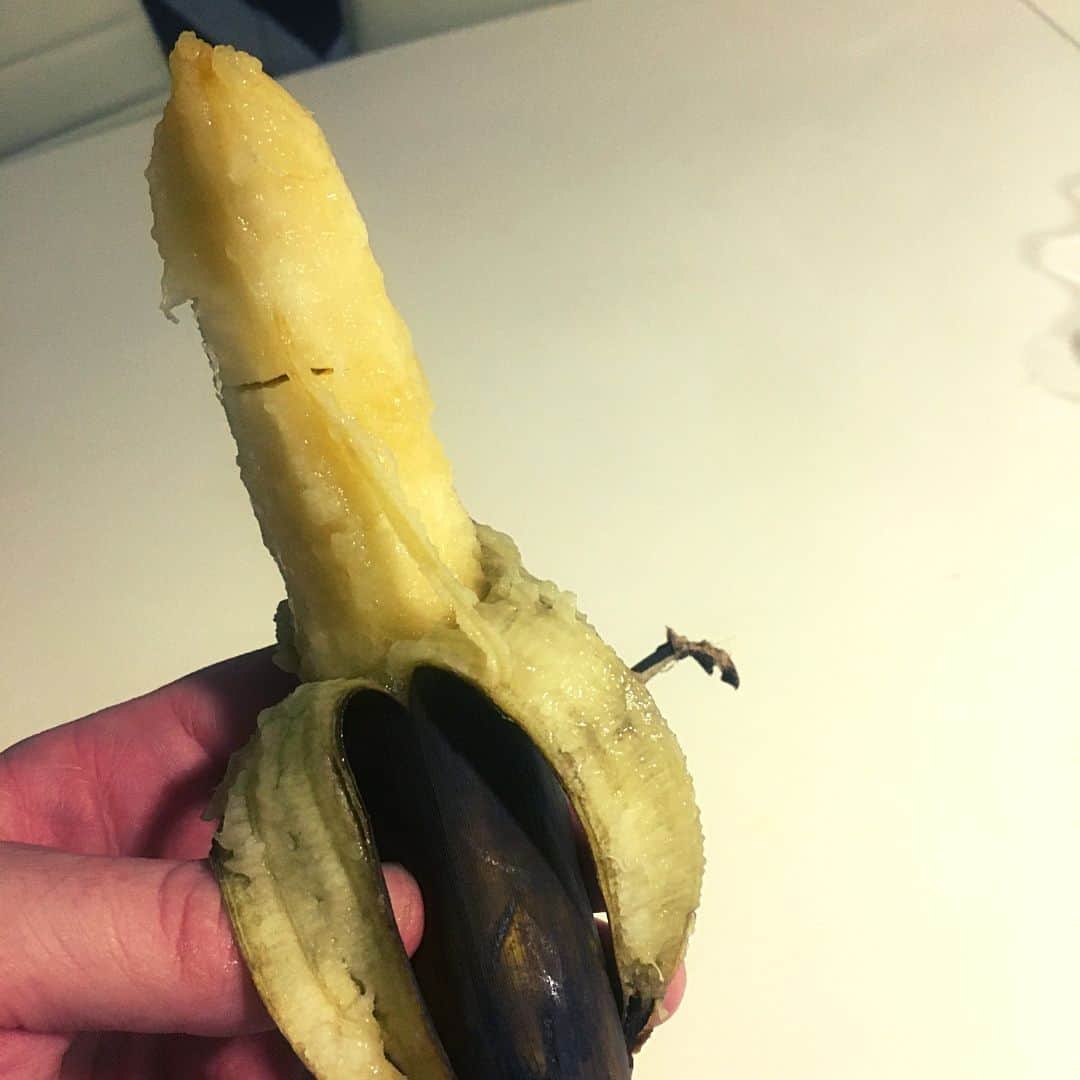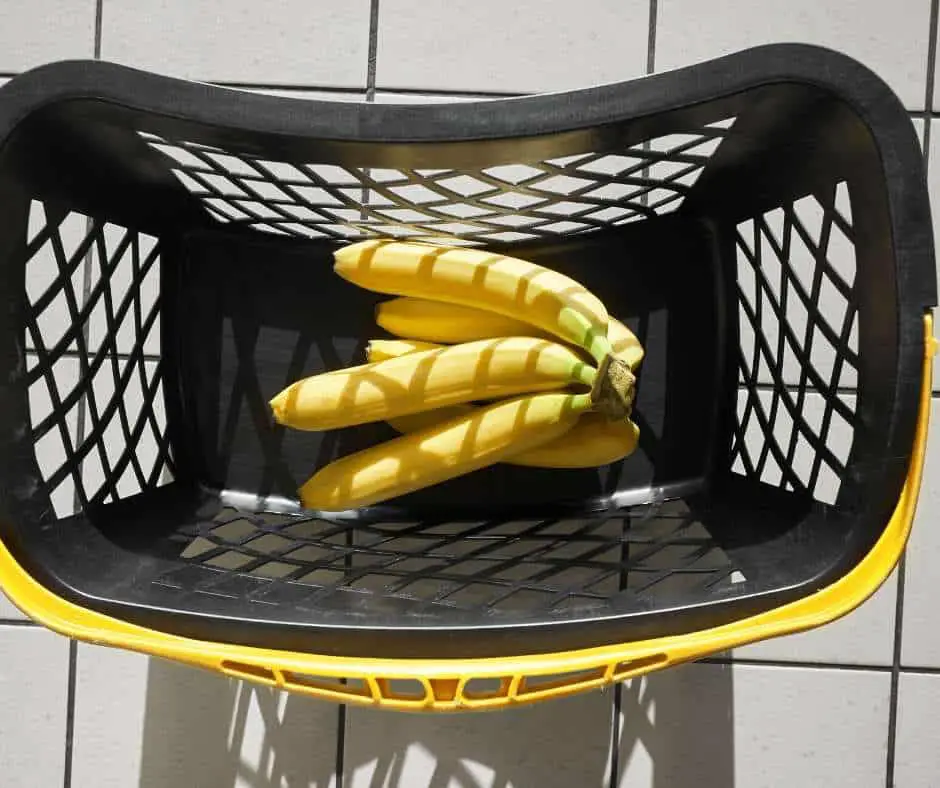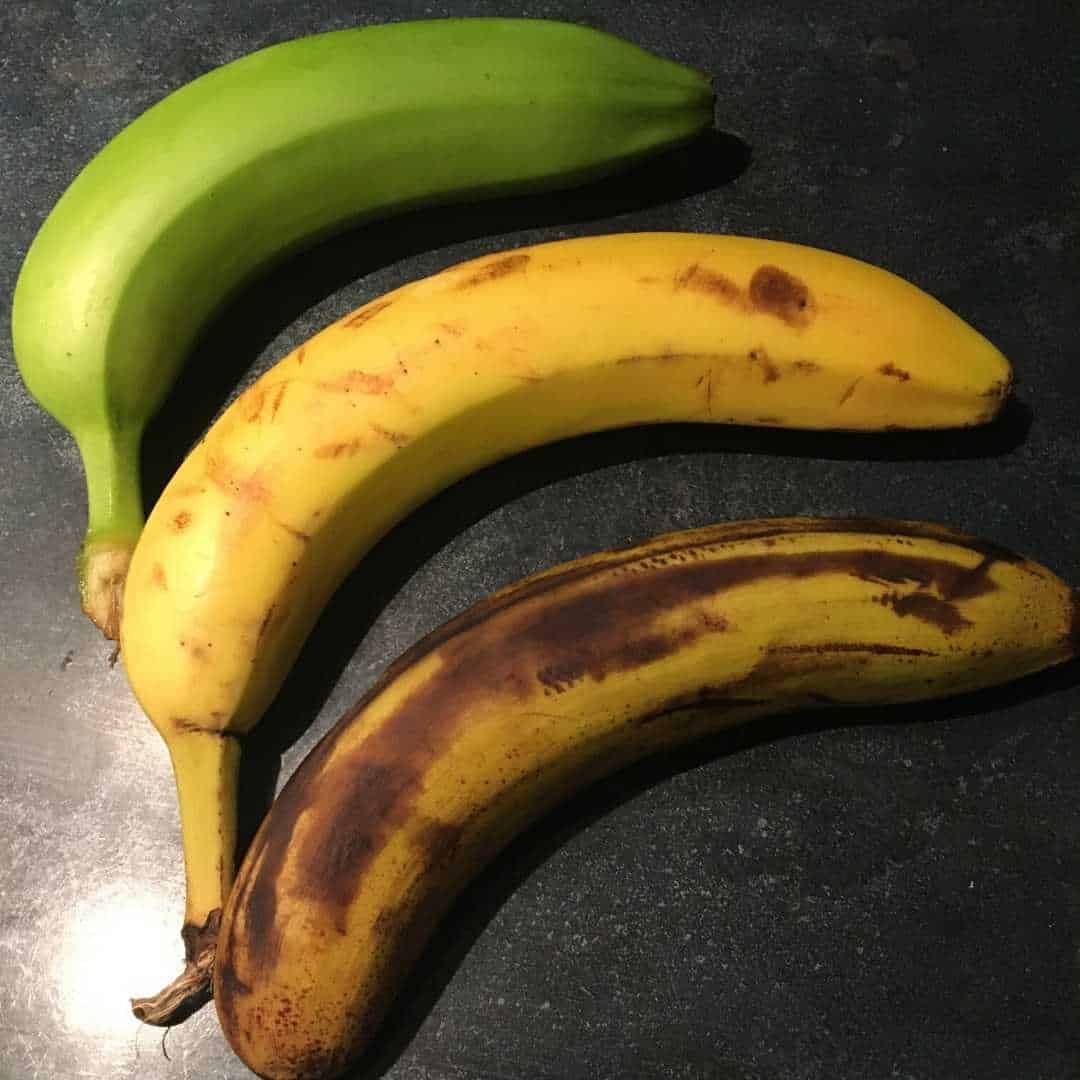Bananas are grown in about 150 countries worldwide, and 105 million tonnes of 1000 different varieties are produced each year. Some experts actually believe that bananas were the first fruit on earth.
Bananas are easily one of the most well-loved fruits in the world – sweet and rich in potassium; it is no wonder that they are a household favorite.
However, these tasty yellow fruits often degrade soon after popping them into the fruit bowl, developing brown spots, splits in the skin, and bruising, which may make you wonder whether they are still OK to eat.
In this article, I will explore which bananas are good to eat and which may be a little riskier. I will also be looking at the best way to store a banana to give it the best life span.
How Do Bananas Go Rotten?

Before looking into whether a banana is safe to eat or not, it is important to have a basic understanding of how and why bananas go rotten. The science behind it is much simpler than you might have expected.
Let’s take a look at the process:
- Ripe bananas have a bright and healthy yellow color.
- As they age, the fruit begins producing a chemical called ethylene.
- The ethylene is what is responsible for causing those nasty black or brown spots on the banana.
- Once a banana becomes damaged, crushed, dropped, and so on, it begins producing more of the chemical, compared to healthy fruit.
- The more time goes on, the more ethylene is produced, and this eventually turns the outer layer completely black.
What’s even more interesting is that, aside from producing ethylene themselves, bananas will react to any traces of the chemical found in the air, further adding to the rotting process of the fruit.
But ethylene is important to bananas because, in the early stages of life, this chemical will help the ripening process and cause them to go from green and hard to soft, yellow, and delicious! [1]
What Happens if You Eat a Rotten Banana?

Many people will become concerned when confronted with the idea of eating a banana that has become overripe – which, in layman’s terms, is simply a banana with brown spots to almost black and has a softer texture. In this case, it will likely be much sweeter to taste; some people even prefer it this way.
It may come as a surprise to you that a slightly overripe banana contains much higher levels of vitamin C, giving you some great advantages when eating them. Eating a banana at this stage of its life cycle will do you no harm unless there are any visible signs of mold, in which case you should discard the fruit.
But what about a banana that has gone completely rotten?
If you eat a banana that has gone completely rotten, you are running the risk of developing some potentially serious health problems. The reason for this is that certain types of mold are known to create hazardous toxins responsible for some severe conditions such as:
- Organ damage.
- Neurodevelopmental disorders.
- Allergic reactions.
- Problems with your respiratory system.
That being said, certain types of mold are perfectly fine to eat – after all, you will sometimes find mold on foods such as cheeses and hams. If you are ever unsure, you should stay on the side of caution and throw that banana away!
Are Black Bananas Safe to Eat?
You probably aren’t going to want to eat a completely brown or even black banana, and as we have learned, you will want to steer clear of any mold. In order to tell whether a banana is safe or not, you can look out for the following signs:
- Fruit flies.
- Blackened stems.
- Any signs of decay.
If your banana is entirely black and has mold or fruit flies, it will not be safe to consume, and you should dispose of it properly. The best way of doing this is by wrapping the banana before putting it in the bin; this will prevent children and pets from accidentally getting hold of it and possibly becoming ill.
But – and there is a huge ‘but’ here – many people favor the use of dark brown or even black bananas when it comes to baking. So if your banana has gone a little black but isn’t moldy or surrounded by a swarm of pesky fruit flies, you may decide to make use of it in a tasty loaf of banana bread.
Many bakers will tell you that this can make a much more flavorsome sweet treat, and some will purposefully ripen bananas to the point of blackness just for this reason!
Read Also: Is It Ok To Eat Moldy Bread If You Toast It First?
Are Green Bananas Safe to Eat?

You have probably experienced one before. I know that I have fallen victim to a hard, bitter green banana because I was too impatient to wait for it to ripen correctly!
A green banana is one that is yet to ripen. The taste and texture of an unripe banana is waxy and bitter, but it won’t cause you any harm. If you are looking to maintain a diet that is high in fiber, a green banana might be better for you than a ripened, yellow one.
The reason for this is that, before bananas come to their most ripe and edible point, they contain a lot more starch. Starch comes under the category of ‘dietary fiber.’ As the banana becomes riper, this turns to sugar, meaning that a green banana may be better for those looking to manage blood sugar levels.
On top of this, a green banana will keep you feeling fuller for longer – so yes, green bananas are perfectly safe to eat, provided you don’t mind the taste and texture!
The Skin is Split Open, Is It Still Safe to Eat?

Now, let’s not confuse a split banana with the delicious ice cream dessert known as a banana split. Often, throughout the ripening process, the skin may split apart on its own, and many people are unsure about whether this makes the banana inedible.
One thing to keep in mind is never to purchase a banana that has split skin. For the most part, the split will appear once you get the banana home, and the main concern is whether the split can serve as a way for bacteria to enter the fruit. If this happens, the bacteria may have the opportunity to develop and can potentially cause symptoms upon eating.
That being said, if you eat the banana as soon as the skin splits and there are no obvious signs of rot or contamination, it will be OK.
What Is the Best Way to Store Bananas?

The way that you store your bananas can play a part in how long they last, meaning that you don’t need to worry about getting them all eaten within just a few days of buying them.
If you buy bananas while they are still green, the best way to store them until they are ripe is to wrap the ends of the stems in aluminum foil or plastic wrap and keep them at room temperature – perhaps in a fruit bowl, on a countertop or using a banana hanger.
Here are the full instructions on how to use aluminum foil to stop bananas from going brown fast: How To Keep Bananas Fresh With Foil (+5 Other Storage Methods).
Once the bananas have reached their ripe stage (have a beautiful yellow color with few brown spots), you can then transfer them into the fridge; giving you an extra 5-7 days to use them.
Don’t put bananas in the fridge when they are still green. That will turn the skin black eventually but without the banana properly ripening in the center, the fruit will have a slightly bitter taste.
It is important to never store your bananas in the same container as other fruits. The ethylene that bananas produce can cause the other fruit to degrade at a much faster rate. (Unless you want the other fruit to ripen faster).
While all fruits produce ethylene, our yellow favorites do so at a much higher level, spelling bad news for any other fruit that they are stored with.
Read Also: Can You Refreeze Butter? Here Is What Happens!
How to Ripen Bananas Faster or Slower?

There may, of course, be times that you want to speed up the process of ripening – or slow it right down – and the good news is that there are ways to do this.
Because ethylene’s production is responsible for causing the banana to ripen, you need to encourage the production of this chemical gas if you want to speed up the process. You can easily do this by storing the bananas in a paper bag and folding them over the top.
In addition to this, you might also wish to pop a few other fruits in the bag and take advantage of the ethylene that they produce, too – but remember that these fruits will probably spoil and have to be thrown out afterward.
In contrast, to slow down the ripening of a banana, you need to lull the ethylene production, which requires cooler temperatures.
The optimum temperatures for more extended storage of green bananas are 55°F (13°C). [2]
As the temperature in the fridge is around 40 °F (4°C) or lower, then keeping them in the refrigerator is not recommended, as I explained above.
However, suppose you are not looking to ripen the bananas. In that case, there are some other handy ways to give your bananas a few extra days of life.
- Buy as green as possible.
- Handled them gently.
- Hang your bananas.
- Keep them away from other ripe fruits.
- Wrap the stems of the fruit in plastic – this will slow down ethylene production.
- Sprinkle some citrus juice on peeled or sliced bananas to make them last longer.
- Freeze your bananas. (Only for cooking later).
Conclusion
For the most part, bananas are safe to eat at any stage of their life cycle – whether they are green, yellow, or even black! However, you should always be mindful and ensure that you do not eat the fruit if there are fruit flies or mold present.
